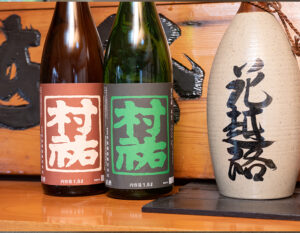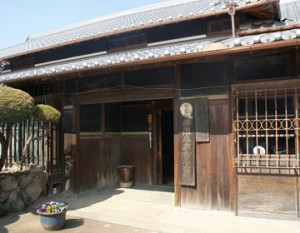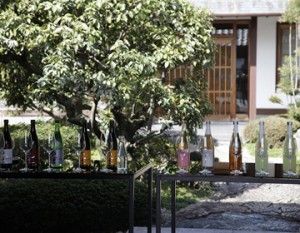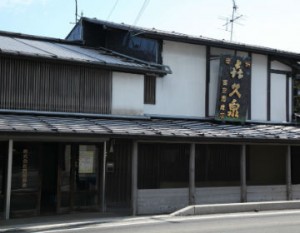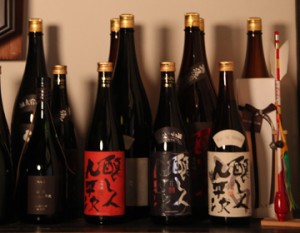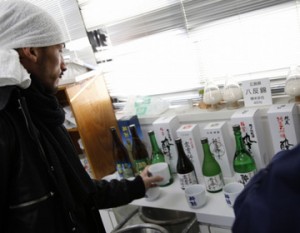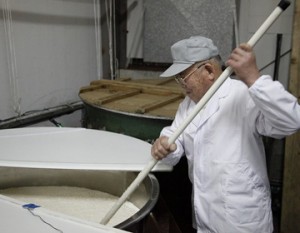While Fushimi in Kyoto and Nada in Kobe are the most famous sake breweries in the Kansai region, Shiga Prefecture is also home to a large number of sake breweries that produce highly distinctive yet high quality sake. One brewery in particular that has a strong presence in the hearts of sake fans is Mifuku Shuzo, located in Minakuchi, a post town on the 53rd leg of the Tokaido Highway.
Shiga, the Undiscovered Sake Kingdom
Shiga Prefecture is actually a “sake kingdom” for those in the know.
Surrounded by high mountains and blessed with an abundance of underground water, the prefecture is also the home of Omi rice, a brand-name rice. The region is blessed with clean water and delicious rice, both of which are necessary for sake brewing.
Another important point is that the area has long been a strategic location for transportation. Sake was needed to entertain travelers along the Tokaido, Nakasendo, Wakasa Kaido, and other major highways in the prefecture. For this reason, there are many breweries with long histories.
Today, about 30 sake breweries in Shiga Prefecture are scattered around Lake Biwa, and each brewery produces a different type of sake. Every sake brewery in Shiga Prefecture has a strong individuality. The fact that Lake Biwa is located in the center of the prefecture makes it difficult for breweries to come and go between each other, and this may be the result of their unique development,” says Noriyuki Fujii, the fourth president of Mitomiku Shuzo.
A brewery along the Tokaido Highway for 105 years
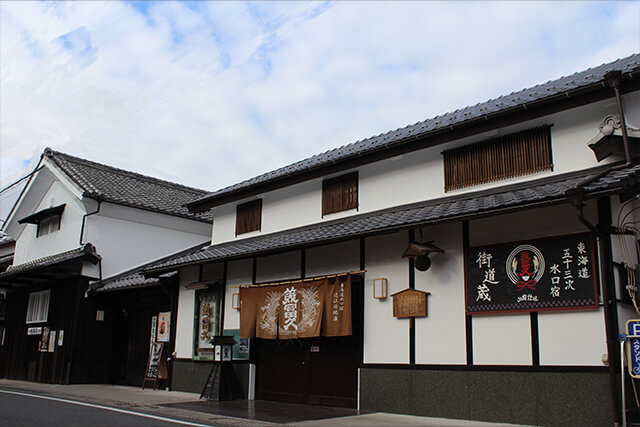
Among Shiga’s unique sake breweries, one that stands out for its aggressive approach to sake brewing is Mitomiku Shuzo.
The company was founded in 1917. The founder, who was born the third son of the Fujii family of sake breweries in Aisho-cho, located on the east side of Lake Biwa, branched out and established a brewery along the Tokaido Highway in Minakuchi-cho, Koka City, Shiga Prefecture.
As the word “mizu” in the name implies, Mizuguchi-cho is blessed with delicious water. Sake brewing using subterranean water from the Suzuka Mountains to the east of the town is very active, and five breweries are concentrated in Minakuchi-cho.
In such a town of Mizuguchi, Mitomiku Sake Brewery has continued to produce sake that focuses on the “umami of rice” using sake rice grown by local contract farmers.
Mitomihisa Brewery’s two top breweries, Yamahai brewing and Ginjo brewing
Mitomiku Brewery’s sake is made with water pumped from its own wells and fed by the Yasu River, a first-class river in Shiga Prefecture that originates in the Suzuka mountain range. The soft water, which contains just the right amount of minerals, has a refreshing taste and is not too sticky.
Among the sake brewed with this water, the Yamahai-brewed sake and theGinjo-brewed sake are especially highly acclaimed. These are the two mainstays of the Mitomiku Brewery.
Yamahai-brewing” has been maintained since the brewery’s founding.
Yamahai brewing is a traditional natural brewing method that uses natural lactic acid bacteria living in the brewery to grow the sake mother, which is the foundation of sake.
It takes about three times longer than normal sake brewing and requires delicate temperature control due to the natural process, but it produces a richer, more acidic sake with a fuller, richer flavor with more breadth and depth than ordinary sake. For this reason, Mitomiku Sake Brewery has maintained the tradition of Yamahai brewing since its establishment.
Mitomiku’s “Yamahai” sake has a clear and distinct character, yet is broad in flavor, and many of them are excellent as a mid-meal sake. It is also suitable for heating sake, and has won gold and top gold medals at the National Heated Sake Contest.
Ginjo Brewing,” which has won numerous awards both in Japan and abroad
Another pillar of the Mitomiku Brewery is the ginjo brewing process, which utilizes modern sake brewing techniques.
In contrast to the Yamahai brewing method, which uses naturally occurring lactic acid bacteria to prepare the sake mother, the Ginjo brewing method uses artificial lactic acid to prepare the sake mother, called “Sokusho-moto.
The main advantages of the “Sokusho-moto” method are shorter brewing time and a more gorgeous aroma.
Like Yamahai-brewed sake, Mifuku’s ginjo-brewed sake has a pronounced rice flavor. The fruity and gorgeous ginjo aroma is followed by the sweetness of the rice that spreads in the mouth. The “umami of rice” is expressed in a different way from that of Yamahai-brewed sake.
Its deliciousness has been highly acclaimed at domestic and international competitions, winning gold medals and gold medals at the ” IWC (International Wine Challenge),” the ” London SAKE Challenge,” and the ” Delicious Sake in a Wineglass Award, ” among others. Some Junmai Daiginjo-shu has been selected as a first-class in-flight drink on major airlines’ international flights.
Among these ginjo-shu, Mr. Fujii is particularly attached to ” Sanrensei,” a brand that has become synonymous with Mitomiku Shuzo. The following is the story of its birth.
I want to compete with my own brand.
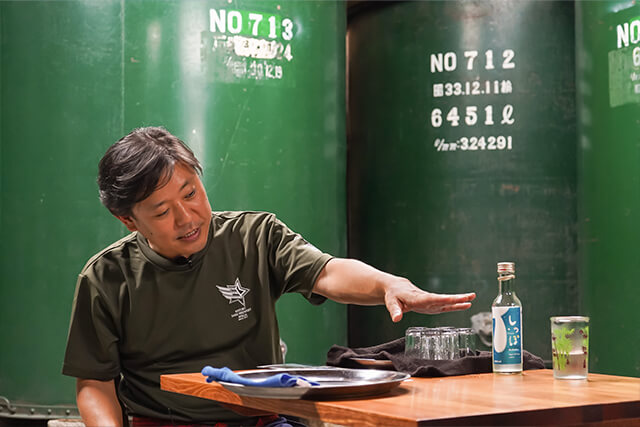
After graduating from university, Mr. Fujii trained at a sake brewery in Gifu Prefecture before returning to his birthplace, Mitomiku Brewery, in 2005 to work on sake brewing.
As he began to focus on traveling throughout Japan to sell his products, Mr. Fujii gradually came to realize that he wanted to compete with his own brand.
If I am going to go to the trouble, I want to make sake that is different from the traditional “Mitomiku sake. Therefore, he decided to make a ginjo type sake with a crisp and gorgeous flavor, which is the opposite of the full-flavored Yamahai brewing method.
The “three stars” created with young brewers
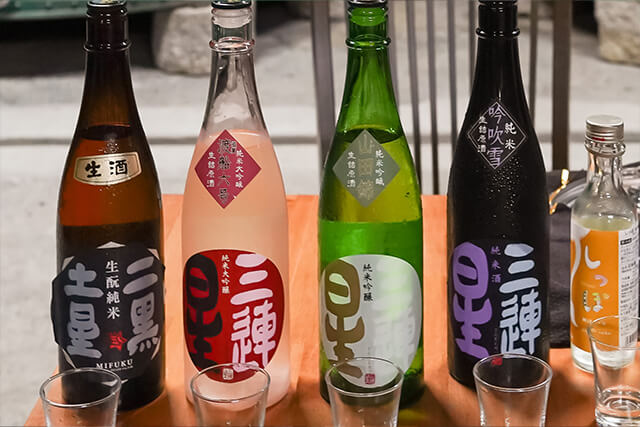
In 2007, Mr. Fujii and three young brewers created ” Sanrenboshi ” through a process of trial and error. It has now grown to become one of the company’s representative brands and has made the name of Mitomiku Sake Brewery well known throughout the country. Three generations of sake rice, Wataribune Roku, Yamadanishiki, and Ginfubuki, are used to make three types of sake :Junmai Daiginjo-shu made with Wataribune Roku, Junmai Ginjo-shu made with Yamadanishiki, and Junmai Shu made with Ginfubuki. Three makers, three generations of sake rice, three types of sake, and three themes. The name “Triple Star” was chosen to represent the three “3s” in a row, so that the sake would shine like a star. The name “Triple Star” is based on such a wish.
Because of the freshness of the sake, the “Sanrensei” is a limited distribution sake, sold only to specific stores. The method of hi-ire has been tried and tested, and the “Sannrenboshi Junmai Ginjo Yamadanishiki” is cooled rapidly after hi-ire using a plate heater to lock in the freshness of the sake. The brewer says it succeeded in creating a taste “fresher than that of unpasteurized sake.
Extra Edition” boldly tackles test brewing
Sangrensei also has an ” Extra Series, ” in which three types of sake are test-brewed each year under a different theme, such as using sake rice or yeast not normally used in the brewery. The results are used in future sake brewing.
Because of the trial and error involved in the search for the ideal flavor, Sannrenboshi ” took a long time to perfect its taste, ” says Fujii. However, as of 2022, the 15th anniversary of its debut, Mitsuboshi Junmai Sake has grown to the point where Fujii recommends it as ” the first bottle of sake to get to know Mitomiku Brewery.
More “easy-to-drink” sake. The challenge to increase the variety of sake continues.
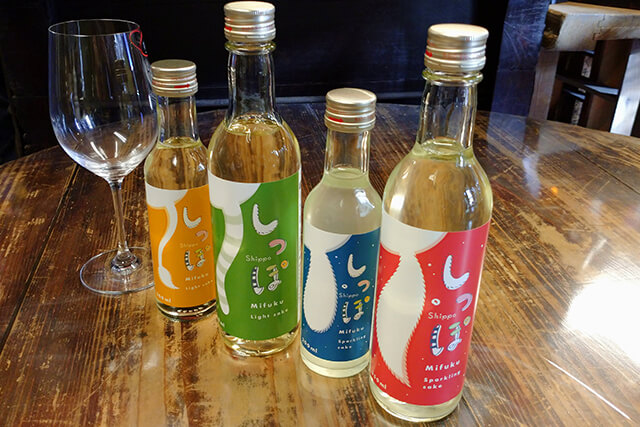
After creating a brand that has become synonymous with the brewery, Mr. Fujii and his team continue to take on new challenges and increase the variety of their offerings.
In the summer of 2021, “Shippo,” a sake aimed at a new fan base, will make its debut. Shippo Mifuku Sparkling,” a sparkling sake with secondary fermentation in the bottle, has an aroma reminiscent of champagne when the glass is tipped, and a light and pleasant mouthfeel that pops and pops. The label design also makes it easy to approach, making even those who might be intimidated by the word “sake” feel compelled to pick it up.
New Possibilities Discovered with “Kimoto” Sake
In the spring of 2022, “Sannrensei,” a sake made using the “kimoto” method of sake making, will make its debut.
The process of making sake by using natural bacteria is similar to the Yamahai method, but the process of mashing rice and rice malt, which is omitted in the Yamahai method, is added to the process of growing lactic acid bacteria.
After actually doing this, I discovered that sake made using the kamishibashi methodhas both theprofound flavor of yamahai brewing and the clean, gorgeous taste of ginjo-style brewing. A new pillar has been added to the existing “two pillars.
Of course, we will continue to carefully carry on the standards of Mitomiku, including Yamahai sake. At the same time, we will continue to take on new challenges and expand the scope of our business. In this way, I believe the appeal of sake will transcend national borders and reach even more people.
We will continue to be an “open brewery
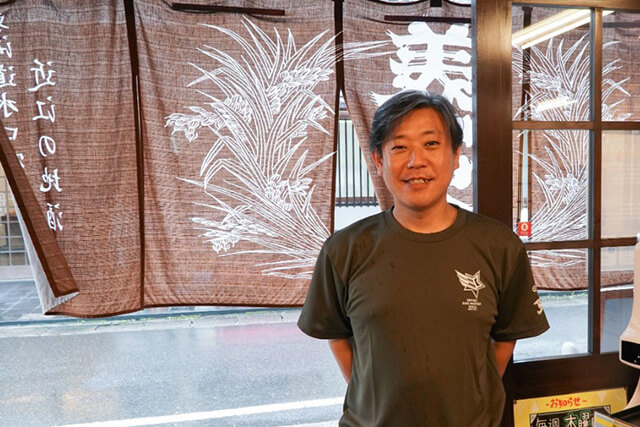
While continuing to brew more than 20 varieties of sake per year, including experimental brews, Mr. Fujii has also worked to create a brewery that is open to the local community.
In 2014, when he became the fourth president, he opened a direct sales office in the brewery. Once a month, the brewery began sellingseasonal sake, available only at the brewery, directly from the tanksby weight. This is a popular event that attracts fans from within and outside of the prefecture to purchase the special sake that is not normally available.
In September 2021, a part of the sake brewery will be renovated to open a café called “KAGURA. There is no end to the ideas for expanding the base of sake fans.
What will be born next? One cannot help but feel a sense of anticipation for this “star” that shines brightly among the many unique breweries in Shiga Prefecture.




